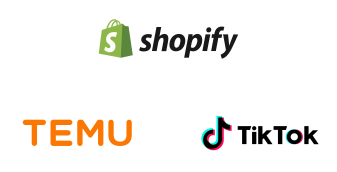How Third-Party Logistics (3PL) Drives Business Growth Data-Backed Benefits, Case Studies, and the 2025 3PL Market Outlook
By Michael · Updated 2025 DEC
UNDERSTANDING 3PL AND ITS STRATEGIC ROLE
Third-party logistics (3PL) has moved from a basic transportation service into a strategic growth lever for businesses operating in global supply chains. Instead of owning every warehouse and truck, companies increasingly partner with specialized providers that focus solely on logistics execution and optimization.
Third-party logistics (3PL) refers to outsourcing logistics activities—such as transportation, warehousing, and order fulfillment—to external providers that specialize in these operations. Manufacturers, retailers, and ecommerce brands rely on 3PLs to handle the physical movement and storage of goods while they focus on product, brand, and customer experience.
This model allows businesses to streamline operations and free internal teams to concentrate on product development, marketing, and long-term market expansion. As early as the 1990s, research already showed that large manufacturers were using 3PL to sharpen focus and support growth, rather than treating logistics as an internal cost center (Lieb & Randall, 1992).
3PL first took off in the 1980s as a way to convert fixed assets such as warehouses, trucks, and in-house labor into flexible, variable-cost capacity. Since then, it has evolved into an integrated model powered by advanced technologies including artificial intelligence, the Internet of Things (IoT), and, in some cases, blockchain-based visibility platforms. Modern 3PLs sit at the intersection of data, infrastructure, and operations—making them a strategic part of how brands scale.
WHY 3PL MATTERS FOR BUSINESS GROWTH
The 3PL sector has become a measurable growth driver for both individual businesses and the global economy. Industry data shows that logistics outsourcing now shapes how companies structure costs, enter new markets, and manage risk across their supply chains.
Armstrong & Associates (2023) reports that U.S. 3PL net revenue reached $131.5 billion in 2024, with projections suggesting a further increase and sustained expansion through 2025. Globally, Statista (2024) projects North American 3PL revenue at $356.7 billion by 2025, with a compound annual growth rate (CAGR) of 2.71% through 2030. At the shipper level, Langley et al. (2025) note that 89% of shippers view their 3PL relationships as successful, and roughly one in four is expanding outsourcing to handle more complex supply chains.
Case Study: Hewlett-Packard’s Supply Chain Transformation
Hewlett-Packard’s experience illustrates how 3PL can reshape cost structure, service, and innovation capacity. In 1999, HP partnered with TNT Logistics to overhaul its European supply chain. Rather than building out its own logistics footprint, HP leveraged TNT’s expertise in inventory management, warehousing, and transportation coordination.
By shifting to a 3PL-led model, HP reduced logistics costs by approximately 15%, improved inventory turnover by about 20%, and shortened European delivery times by around 30% (Rushton & Walker, 2007). These gains did more than remove costs—they freed up capital and management bandwidth for research and development, helping HP stay competitive in fast-moving technology markets.
Key Growth Levers Enabled by 3PL
When executed well, 3PL supports business growth through three primary levers:
- Cost savings: Shared facilities, transportation capacity, and labor reduce capital expenditure and lower per-unit logistics costs.
- Operational efficiency: Professionalized warehousing, inventory management, and transportation planning streamline the end-to-end order lifecycle.
- Market reach: Established global networks help brands enter and serve new regions without building their own local infrastructure.
Table 1: Global 3PL Market Forecast
Source: Statista (2024), Armstrong & Associates (2023)
| Year | Global 3PL Revenue (Trillion USD) | Growth Rate (%) |
|---|---|---|
| 2023 | 1.2 | -18.5 |
| 2024 | 1.3 | 1.8 |
| 2025 | 1.4 | 4.5 |
| 2030 | 1.8 | CAGR 2.71 |
LIMITATIONS OF TRADITIONAL 3PL MODELS
Traditional 3PL models were designed primarily to reduce cost and manage physical flows. Many of these providers still rely on legacy systems and processes that struggle to keep up with today’s digital, omnichannel supply chains. As a result, cost efficiency may be achieved, but visibility, flexibility, and integration can suffer.
Gartner (2022) found that many businesses view traditional 3PL systems as insufficient for digital-era needs, particularly when it comes to real-time data, planning, and responsiveness. By 2024, only 29% of supply chain organizations believed they had the capabilities required to meet their future performance goals (Gartner, 2025).
Case Study: Target’s Canadian Market Exit
Target’s failed entry into Canada demonstrates how logistics and data challenges can derail a strategic growth initiative. In 2012, Target acquired 124 Zellers locations for approximately $1.8 billion with the goal of reaching $6 billion in annual revenue by 2017. The company invested heavily in retail footprint but struggled to get inventory and logistics right.
Inaccurate inventory data and weak integration between systems led to simultaneous overstocking and stockouts. Shelves appeared empty even when inventory sat in the back room, while other items accumulated in the wrong locations. By 2015, Target took a $5.4 billion write-off and exited the Canadian market entirely (Dahlhoff, 2015). The breakdown highlighted how traditional logistics models, unsupported by robust data synchronization and cross-border scalability, can undermine growth strategies.
Market Context: Why Traditional Approaches Are Under Pressure
Armstrong & Associates (2023) reported an 18.5% decline in global 3PL revenue to $1.2 trillion in 2023, reflecting pandemic disruptions, shifts in demand, and the limitations of older operating models. At the same time, Deloitte’s 2024 supply chain resilience study shows that 61% of shippers are calling for transformation that balances efficiency with flexibility. Together, these findings reinforce the need for 3PL providers to move beyond simple cost cutting and toward technology-enabled, data-rich solutions.
Table 2: Traditional vs. Modern 3PL Performance
Source: Langley et al. (2025)
| Metric | Traditional 3PL | Digital 3PL |
|---|---|---|
| Inventory Accuracy | 95% | 99% |
| Delivery Time Reduction | 20% | 40% |
| Cost Savings | 15% | 25% |
Modern providers narrow these gaps through real-time inventory tracking, advanced analytics, and automated warehousing. WinsBS, for example, focuses on real-time visibility and automation to address these structural limitations and support brands that operate across ecommerce, crowdfunding, and cross-border channels.
For teams planning complex campaigns or multichannel growth, additional detail on these workflows can be found in WinsBS’s Crowdfunding Fulfillment Guide.
CORE BENEFITS OF 3PL FOR SHIPPERS
When organizations choose the right 3PL model, the impact shows up directly in cost structure, working capital, and revenue growth. Outsourced logistics can reduce fixed investments, improve inventory utilization, and compress lead times—especially for brands that are expanding into new markets or scaling ecommerce channels.
Armstrong & Associates (2023) estimates that companies using 3PL services often reduce fixed asset investments by 15–25%. Instead of tying capital up in warehouses, fleets, and in-house systems, these businesses convert logistics into an on-demand service that scales with demand.
Lowering Logistics Costs
By pooling facilities, labor, and transportation capacity across multiple clients, 3PL providers spread fixed costs and reduce unit economics for each brand. Manufacturers and retailers can then redirect capital and management focus toward product development, brand-building, and customer acquisition.
Deloitte (2022) highlights that businesses using 3PL services often see significant logistics cost reductions, particularly in capital-intensive sectors like manufacturing, durable goods, and electronics. These savings compound over time as volumes grow and network optimization improves.
Streamlining Inventory Management
Modern 3PLs use advanced forecasting, slotting, and replenishment models to improve inventory turnover and reduce excess stock. Langley et al. (2025) report that companies leveraging 3PL services achieve, on average, 20% higher inventory turnover—especially in ecommerce, consumer electronics, and fast-moving consumer goods.
Better turnover means less cash locked in slow-moving inventory and more agility to respond to shifts in demand, new product launches, and promotional campaigns.
Expanding into New Markets
Global 3PL networks shorten the time required to enter new regions by providing ready-made warehousing, transportation, and compliance infrastructure. McKinsey (2021) notes that brands using third-party logistics for international expansion can cut market entry time by about 30% compared with fully in-house models.
Instead of building a local warehouse network from scratch, brands can ship into a 3PL’s regional hubs, leverage existing carrier relationships, and layer on local knowledge of customs and regulatory requirements.
Adapting to Market Shifts
Demand volatility—from seasonal peaks like Black Friday to unexpected spikes driven by social media or influencer campaigns—has become the norm. Flexible 3PL capacity helps brands ride these waves without overcommitting to fixed infrastructure.
Walmart’s 2023 annual report credits logistics partnerships, including 3PL providers, with enabling faster delivery on promotions and more resilient performance during demand surges. This flexibility is particularly valuable for ecommerce, where customer expectations are shaped by next-day and two-day delivery standards.
Leveraging Modern Technology
Technology is now the main differentiator between traditional and growth-oriented 3PLs. Real-time data analytics, predictive models, and integrated WMS/TMS platforms enable tighter planning, faster response times, and better alignment between inventory and demand.
Gartner (2022) points to technology maturity as a core driver of 3PL performance, especially in digital commerce. Providers that invest in integrated platforms, API connectivity, and automation can offer a fundamentally different level of service compared with those operating on legacy systems.
Case Study: Levi Strauss & Co.
In 2024, Levi Strauss partnered with 3PL providers to strengthen its direct-to-consumer channel. By consolidating fulfillment operations and leveraging 3PL capabilities, Levi’s reduced fulfillment costs by around 15% and improved inventory turnover (Levi Strauss, 2024).
The result was a better customer experience—faster, more reliable deliveries—paired with a more efficient supply chain that backed Levi’s broader growth strategy.
Case Study: Small Ecommerce Brand Success
A U.S.-based skincare brand running on Shopify relied on WinsBS’s regional warehousing to manage a sharp Black Friday spike. Instead of shipping from a single location, the brand pre-positioned inventory across U.S. nodes and aligned inbound freight with forecasted campaign volume.
During the peak period, the brand achieved 98% on-time delivery and saw customer satisfaction scores rise by about 20% (WinsBS Case Study, 2024). For a small team, the 3PL relationship turned a potential fulfillment bottleneck into a growth moment.
Table 3: 3PL Value Metrics
Source: Deloitte (2022), McKinsey (2021)
| Value Dimension | Average Savings (%) | Industry Example |
|---|---|---|
| Capital Investment | 20 | Manufacturing |
| Inventory Turnover | 25 | Ecommerce |
| Expansion Time | 30 | Cross-Border Retail |
For brands that want to turn these principles into a concrete operations plan, WinsBS offers tailored logistics design and fulfillment solutions. For ecommerce and cross-border sellers, a modern 3PL partner can function as a growth engine, not just a cost center. Get Started for Free.
3PL’S IMPACT ON ORDER FULFILLMENT
Order fulfillment is where customers directly experience the impact of a 3PL partnership. Accuracy, speed, and reliability translate into reviews, repeat purchases, and long-term loyalty. As order volumes rise, in-house teams often struggle to maintain service levels while controlling cost.
Langley et al. (2025) report that ecommerce operations using 3PL partners achieve over 99% order accuracy, reduce delivery times by about 40%, and increase customer retention by roughly 25%. These metrics reflect a combination of better processes, optimized warehouse layouts, and carrier management.
Case Study: Crowdfunding Campaign Success
A smart home device that launched on Kickstarter partnered with WinsBS for global fulfillment. The campaign involved multiple pledge tiers, add-ons, and backers in several regions, creating significant operational complexity.
WinsBS used automated sorting, regional warehousing, and wave-based shipment planning to handle the project. Approximately 95% of orders were delivered within two days in core markets, driving higher backer satisfaction and contributing to a 30% uplift in repeat purchases after the campaign.
Technical Advantage: Predictive and SKU-Complex Fulfillment
WinsBS’s proprietary inventory system uses predictive analytics to anticipate demand surges and align labor and carrier capacity in advance. This is particularly important for complex SKU sets such as apparel collections, multi-component kits, or mixed bundles.
The system is designed to maintain 99.9% order accuracy even in categories with high SKU complexity. Real-time tracking, exception handling, and customized packaging standards reduce damage rates and complaints, which in turn lowers support tickets and replacement costs by around 30%.
Table 4: 3PL Order Fulfillment Performance
Source: Langley et al. (2025)
| Metric | Self-Managed | 3PL-Managed | Improvement (%) |
|---|---|---|---|
| Order Accuracy | 92% | 99% | 7 |
| Delivery Time | 5 days | 2 days | -60 |
| Customer Retention | 60% | 85% | 25 |
Brands that want to translate these performance gains into ecommerce workflows can explore WinsBS’s Ecommerce Fulfillment Solutions, which are built around balancing speed, cost, and accuracy.
EMERGING TRENDS SHAPING 3PL
The 3PL industry is in the middle of a technology and sustainability transition. Providers that adopt data-rich, automation-heavy operating models are pulling away from those that continue to rely on manual, paper-based processes and fragmented systems.
UPS’s ORION route optimization system, for example, has reduced delivery miles by an estimated 10–15% by using advanced algorithms to optimize driver routes (UPS, 2023). DHL’s GoGreen program has cut emissions across targeted segments by 20–30% through a mix of electric vehicles, more efficient routing, and carbon offset initiatives (DHL, 2023). Before it was discontinued, Maersk’s TradeLens platform showed how blockchain-based documentation could shorten customs clearance by 20–40% (Maersk, 2022).
Sustainability and Regulatory Pressure
Sustainability is no longer optional. With frameworks such as the EU’s Carbon Border Adjustment Mechanism (CBAM) taking shape, shippers and logistics providers must account for carbon intensity and environmental impact as part of their planning.
3PL providers are responding by adopting more efficient linehaul networks, investing in lower-emission fleets, and redesigning packaging. WinsBS, for instance, uses recyclable materials and route optimization to reduce carbon footprints by roughly 15%, aligning logistics execution with the sustainability expectations of U.S. and European consumers.
Table 5: 3PL Technology Adoption Trends
Source: Statista (2024)
| Technology | Adoption Rate 2025 (%) | Projected 2030 (%) |
|---|---|---|
| Artificial Intelligence | 65 | 85 |
| Internet of Things | 50 | 70 |
| Blockchain | 20 | 40 |
THE FUTURE OF 3PL: A STRATEGIC PARTNER FOR GROWTH
Looking ahead, 3PL providers will increasingly be measured not just on cost per order, but on their contribution to growth, resilience, and customer experience. The most valuable partnerships will be those in which the 3PL understands the shipper’s strategy and can configure operations accordingly.
As Dr. John Langley, founder of the Annual Third-Party Logistics Study, emphasizes, 3PLs that prioritize understanding and meeting shipper expectations are best positioned to succeed (Langley et al., 2025). This shift reframes logistics from a support function into a co-owned strategic capability.
Personalized Services and Smart Optimization
Algorithms are already shaping how inventory is allocated, how orders are routed, and which carriers are selected for each shipment. This personalization extends beyond ecommerce and into B2B, retail, and cross-border flows. Amazon’s logistics network, for example, uses advanced forecasting and routing to cut delivery times and support high service levels at scale.
Global Integration and Multimodal Hubs
As trade patterns evolve, global integration is becoming more important than ever. Networks that combine ocean, air, road, and parcel capabilities—supported by regional fulfillment hubs—can reduce total landed cost and improve delivery performance.
DHL’s global network is one example: by linking cross-border air hubs, regional distribution centers, and last-mile carriers, it supports efficient international flows for brands of all sizes (DHL, 2024).
Sustainability as a Core Design Principle
Green logistics initiatives—from alternative fuels and electric vehicles to recyclable packaging and network redesign—are becoming embedded in how 3PLs structure their services. UPS’s efforts to lower emissions through fleet investments and routing initiatives show how sustainability can align with cost and service improvements (UPS, 2023).
How WinsBS Positions 3PL as a Growth Engine
WinsBS supports ecommerce and crowdfunding brands with predictive inventory tools, technology-driven routing, and packaging standards that align with both service and sustainability goals. The focus is on helping brands comply with evolving regulations—such as EU requirements—while improving customer satisfaction and lifetime value.
For teams planning Kickstarter, Indiegogo, or omnichannel launches, these capabilities are summarized in WinsBS’s Kickstarter Fulfillment Guide, which translates high-level logistics concepts into practical execution steps.
REFERENCES
- Armstrong & Associates. (2023). Transition – Soft landing at a new level: Latest third-party logistics market results and predictions for 2023.
- Deloitte. (2022). Retail supply chain survey 2022. https://www.deloitte.com/us/en/insights/industry/retail-distribution/retail-distribution-industry-outlook.html
- Gartner. (2022). Digital supply chain survey 2022.
- Gartner. (2025). Supply chain planning technology trends. https://www.gartner.com/en/supply-chain/trends/supply-chain-planning-technology
- Langley, C. J., Penske Logistics, & NTT Data. (2025). 2025 Third-Party Logistics Study.
- Lieb, R. C., & Randall, H. L. (1992). The use of third-party logistics services by large American manufacturers. Journal of Business Logistics, 13(2), 29–41.
- McKinsey & Company. (2021). Global supply chains: The future of cross-regional expansion. https://www.mckinsey.com/capabilities/operations/our-insights/future-proofing-the-supply-chain
- Walmart Inc. (2023). Walmart annual report 2023. https://corporate.walmart.com/annualreports
- Levi Strauss. (2024). 2024 Annual Report. https://s23.q4cdn.com/172692177/files/doc_financials/2024/ar/2024-LS-Co-Annual-Report.pdf
- Rushton, A., & Walker, S. (2007). International Logistics and Supply Chain Outsourcing. Kogan Page.
- Dahlhoff, D. (2015). Why Target’s Canadian expansion failed. Harvard Business Review. https://hbr.org/2015/01/why-targets-canadian-expansion-failed
- UPS. (2023). UPS Sustainability Report 2023. https://about.ups.com/us/en/our-impact/sustainability.html
- DHL. (2023). GoGreen Program Report. https://www.dhl.com/global-en/home/sustainability.html
- Maersk. (2022). TradeLens Platform Updates.
- Statista. (2024). Third-party logistics market worldwide. https://www.statista.com/outlook/mmo/freight-logistics/3pl/worldwide
Methodology & Sources
Compiled by: WinsBS Research Team
- Global 3PL market reports from Armstrong & Associates, Statista, and major consultancies
- Peer-reviewed research on 3PL adoption and logistics outsourcing
- Annual reports and sustainability disclosures from leading brands and carriers
- Publicly available supply chain surveys from Deloitte, Gartner, and McKinsey
- Internal WinsBS case studies and fulfillment performance benchmarks (anonymized)
Data Period: 2021–2025
Disclaimer: This article provides general industry guidance and does not constitute legal, tax, or financial advice. Brands should validate assumptions and consult appropriate advisors before making decisions about logistics strategy, market expansion, or regulatory compliance.
Citation: WinsBS Research, 2025.














